
Pringlea antiscorbutica, commonly known as Kerguelen cabbage, is a flowering plant and the sole member of the monotypic genus Pringlea in the family Brassicaceae. Its common name comes from the archipelago of its discovery, the Kerguelen Islands, and its generic name derives from Sir John Pringle, president of the Royal Society at the time of its discovery by Captain James Cook's Surgeon, William Anderson in 1776.
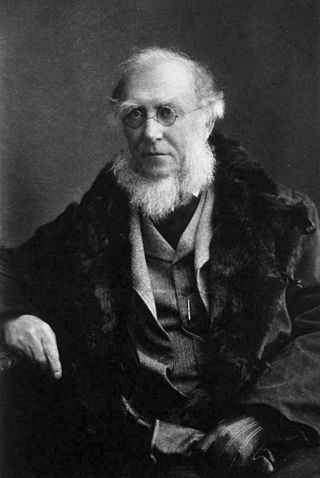
Sir Joseph Dalton Hooker was a British botanist and explorer in the 19th century. He was a founder of geographical botany and Charles Darwin's closest friend. For 20 years he served as director of the Royal Botanical Gardens, Kew, succeeding his father, William Jackson Hooker, and was awarded the highest honours of British science.
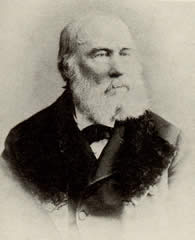
Walter Hood Fitch was a botanical illustrator, born in Glasgow, Scotland, who executed some 10,000 drawings for various publications. His work in colour lithograph, including 2700 illustrations for Curtis's Botanical Magazine, produced up to 200 plates per year.

Liparophyllum gunnii, commonly known as alpine marshwort, is a species of aquatic flowering plants in the family Menyanthaceae. It is the type for the genus Liparophyllum. It is a wetland plant having a rhizomatous root structure and alternate linear leaves. Its flowers occur singly, are five-petalled, and white. Flowers bud and open from December to February; fruits form from December through April. L. gunnii is indigenous to Tasmania and New Zealand.
Oldfieldia is a plant genus under the family Picrodendraceae, the only member of its subtribe (Paiveusinae). It was described as a genus in 1850.
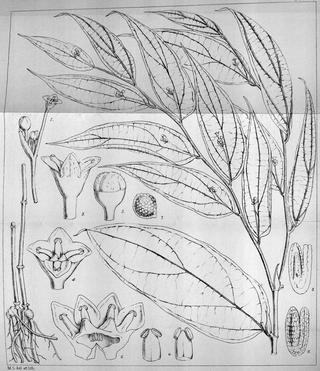
Stichoneuron is a genus in the family Stemonaceae erected in 1883.

Neyraudia is a genus of Asian and African plants in the grass family.

Macrachaenium is a genus of flowering plants in the family Asteraceae.

Anthoxanthum brunonis is a species of grass, native to the South Island of New Zealand and to the Auckland and Campbell Islands.
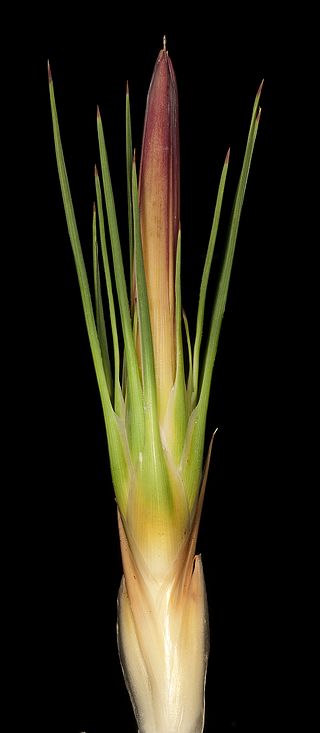
Baxteria is a genus of flowering plant in the Dasypogonaceae described as a genus in 1843. There is only one known species, Baxteria australis, found only in the southwestern part of Western Australia.

The Flora Antarctica, or formally and correctly The Botany of the Antarctic Voyage of H.M. Discovery Ships Erebus and Terror in the years 1839–1843, under the Command of Captain Sir James Clark Ross, is a description of the many plants discovered on the Ross expedition, which visited islands off the coast of the Antarctic continent, with a summary of the expedition itself, written by the British botanist Joseph Dalton Hooker and published in parts between 1844 and 1859 by Reeve Brothers in London. Hooker sailed on HMS Erebus as assistant surgeon.

The Ross expedition was a voyage of scientific exploration of the Antarctic in 1839 to 1843, led by James Clark Ross, with two unusually strong warships, HMS Erebus and HMS Terror. It explored what is now called the Ross Sea and discovered the Ross Ice Shelf. On the expedition, Ross discovered the Transantarctic Mountains and the volcanoes Mount Erebus and Mount Terror, named after each ship. The young botanist Joseph Dalton Hooker made his name on the expedition.
The Flora Tasmaniae is a description of the plants discovered in Tasmania during the Ross expedition written by Joseph Dalton Hooker and published by Reeve Brothers in London between 1855 and 1860. Hooker sailed on HMS Erebus as assistant surgeon. Written in two volumes, it was the last in a series of four Floras in the Flora Antarctica, the others being the Botany of Lord Auckland's Group and Campbell's Island (1843–1845), the Botany of Fuegia, the Falklands, Kerguelen's Land, Etc. (1845–47), and the Flora Novae-Zelandiae (1851–1853). They were "splendidly" illustrated by Walter Hood Fitch.
The Botany of Fuegia, the Falklands, Kerguelen's Land, Etc. is a description of the plants discovered in these islands during the Ross expedition written by Joseph Dalton Hooker and published by Reeve Brothers in London between 1845 and 1847. Hooker sailed on HMS Erebus as assistant surgeon. It was the second in a series of four Floras in the Flora Antarctica, the others being the Flora of Lord Auckland and Campbell's Islands (1843-1845), the Flora Novae-Zelandiae (1851–1853), and the Flora Tasmaniae (1853–1859). They were "splendidly" illustrated by Walter Hood Fitch.

The Botany of Lord Auckland's Group and Campbell's Island is a description of the plants discovered in those islands during the Ross expedition written by Joseph Dalton Hooker and published by Reeve Brothers in London between 1844 and 1845. Hooker sailed on HMS Erebus as assistant surgeon. It was the first in a series of four Floras in the Flora Antarctica, the others being the Botany of Fuegia, the Falklands, Kerguelen's Land, Etc. (1845–1847), the Flora Novae-Zelandiae (1851–1853), and the Flora Tasmaniae (1853–1859). They were "splendidly" illustrated by Walter Hood Fitch.
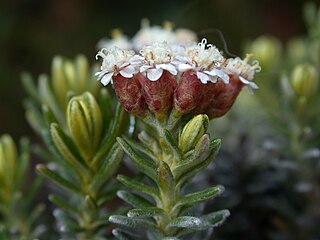
Ozothamnus ledifolius is a shrub, from the family Asteraceae and one of 54 species from the genus Ozothamnus. Harold Frederick Comber (1897–1969), an English horticulturist and plant collector, introduced Ozothamnus ledifolius in 1929 on mountains of Tasmania above 2500 ft. high from the seeds collected from 4000 ft. height.

Actinotus suffocatus, the crimson flannelflower, is a small, perennial herb endemic to the Australian State of Tasmania. It is primarily found in high-elevation habitats in wet situations, except in the far south-west of the island, where it occurs down to sea level in continually moist habitats.

Scaevola gracilis is a plant in the family Goodeniaceae, native to the Kermadec Islands and Tonga.

Myosotis capitata is a species of flowering plant in the family Boraginaceae, endemic to the Campbell and Auckland Islands of New Zealand. Joseph Dalton Hooker described the species in his 19th century work Flora Antarctica. Plants of this species of forget-me-not are perennial and erect, and have ebracteate inflorescences and blue corollas. It is one of two native species of Myosotis in the New Zealand subantarctic islands, the other being M. antarctica, which can also have blue corollas.















